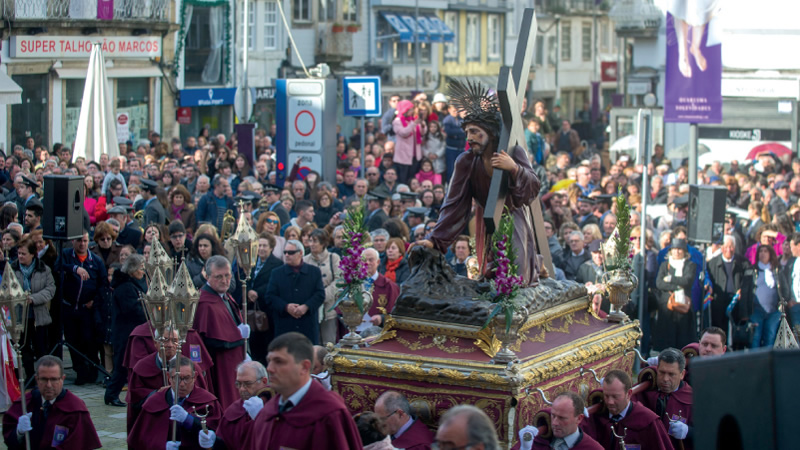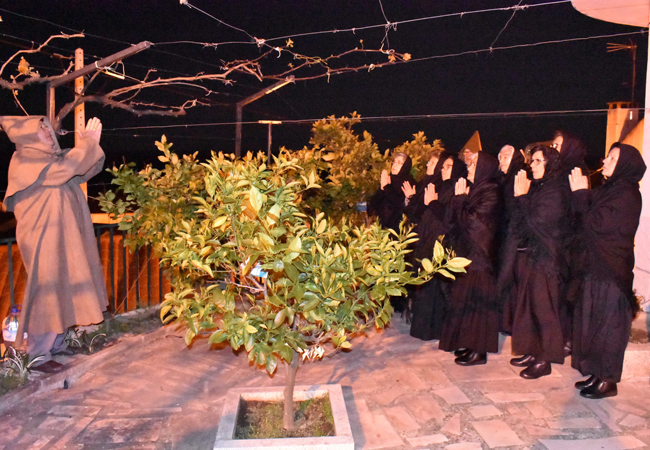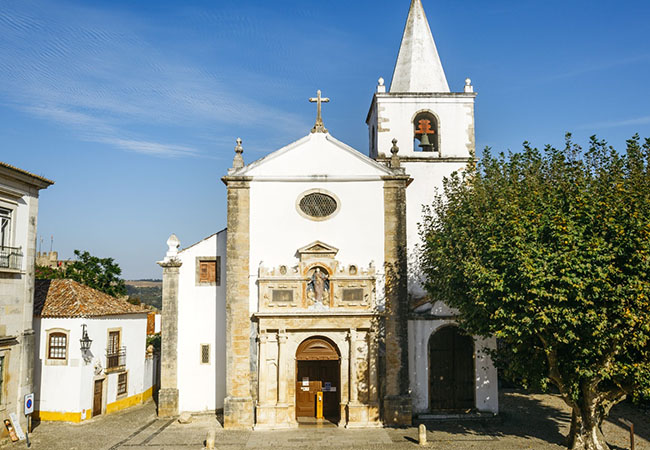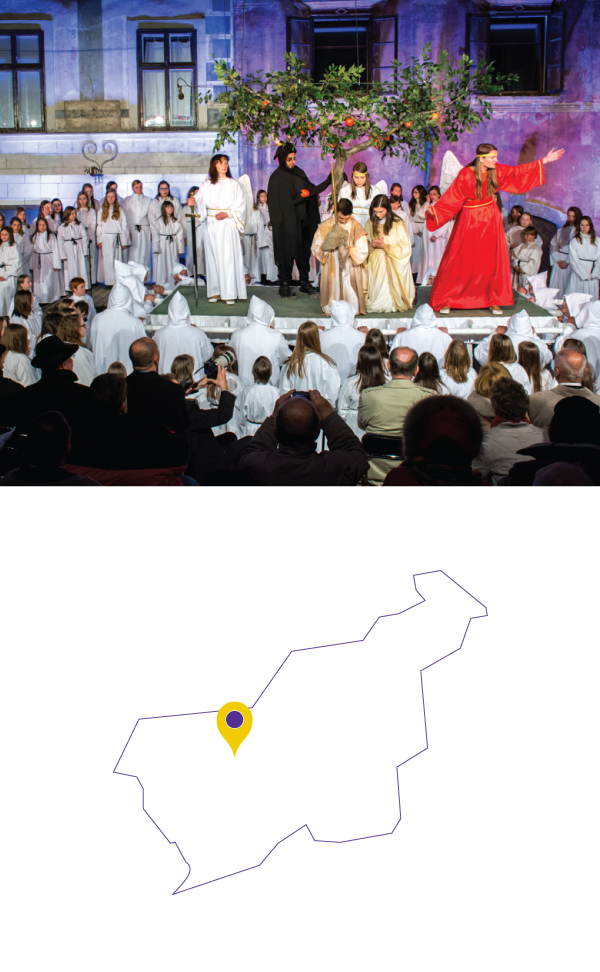Óbidos is a Portuguese town in the district of Leiria. It belongs to the historic province of Estremadura. It is believed to have been founded by the Celts around 308 BC. There was a rule attempt by the Phoenician people, but it was finally conquered by the Romans. The Romans encountered great resistance in the fortification and they besieged it by sea, embarking from a port located in the North (currently Barra de S. Martinho) and sailing near the walls of the village through the estuary of Foz do Arelho. According to different authors, this is where the name Óbidos comes from: the head of the Roman army informed Julius Caesar of their victory indicating that the conquest was only possible through the estuary using the expression “Ob id os” (through this mouth). Although it is also argued that the name may be an evolution of the word “Oppidum”, which means fortified town. With the decline of the Roman Empire, several peoples – such as the Alans, the Suebi, and the Goths – took over the province of Lusitania (Portugal).
Óbidos
Travelling the network
Óbidos
BACKGROUND

These were followed by the Arabs, who remained in this land between 711 and 1148. Led by Gonçalo Mendes da Maia, “O Lidador”, a group of knights charged through the eastern part of the town during the night, while the rest of the soldiers distracted the Arabs at the Castle gate to the west at what is currently known as “Porta da Vila”.
The governor, upon seeing that the eastern part of the Castle was being invaded and surprised that the Portuguese had reached that area, thought that he might have been betrayed by one of his own and shouted the words “betrayal! Betrayal!”, as an alarm signal. Thus, this castle gate, which is located at the base of the D. Diniz Tower, became known as the ‘Gate of Betrayal’.
After the conquest, a commemorative monument dedicated to Jesus Crucified and the Virgin of Mercy, called “Cross of Remembrance”, was founded in the Castle. A small chapel was also built in the Porta da Vila, where the image of Our Lady of Mercy was placed. In 2007, Óbidos Castle was declared one of the Seven Wonders of Portugal, and is the second of the seven most relevant monuments of Portuguese architectural heritage.
WHAT TO SEE
The town of Óbidos, with its vestiges of medieval origin, is one of the most important historical and cultural heritage sites in Portugal. The imposing Castle and the narrow, labyrinthine streets (honoring its past) are symbols of the importance of this city, along with other elements of religious and civil architecture.
The Church of Santa María stands out as part of its religious cultural heritage. It is located in the Plaza de Santa María and it is the town’s most important temple. Although tradition traces its foundation back to the Visigoth era and it was transformed into a mosque in Muslim times, it was reconsecrated by Don Afonso Henriques shortly after the conquest of the city.
The medieval Church of São Pedro, on the other hand, preserves traces from the original old Gothic entrance on the façade. It was renovated in the second half of the 16th century, like other churches in town. Greatly damaged by the earthquake of 1755, the magnificent baroque altarpiece with gilded carvings from the Johannine period stands out inside. Right in front of it, we find the Capela de São Martinho family funeral chapel.
In Óbidos we also find the Igreja da Misericórdia, which was formerly the Chapel of the Holy Spirit. Today it stands as the Holy House of Mercy of Óbidos and was founded by Queen Leonor in 1498. Attached to this church is the old Misericordia Hospital, which includes a meeting room with rich baroque decoration.
Other places of interest are the Hermitage of Nossa Senhora de Monserrate (Ordem Terceira) located in the suburbs, and the Santuário do Senhor Jesus da Pedro, on the outskirts of the town.
Óbidos has a network of museums and galleries where a wide variety of cultural activities and programs are organized, such as the Parish Museum of Óbidos, the Municipal Museum, the Abilio Museum, Nova Ogiva Galery, Casa do Arco and the Interior Design Center.
Among its natural features stands out the Lagoa de Óbidos lagoon and wetlands, a fascinating natural system composed of several complex ecological niches. With an area of 2,600 hectares, 5 km long and 1 km wide, it is located between Carvoeiro Cape and São Martinho do Porto. Like any other coastal lagoon, it is an environmental system of great value and in permanent evolution.
Added to the cultural and natural importance of the municipality is an extensive program of events that provides additional interest, among the organized activities we could highlight the Medieval Market, the International Chocolate Festival, Easter, Óbidos Vila Gaming, the Opera Festival, the Óbidos FOLIO International Literary Festival, Latitudes – Literature and Travelers – and Óbidos Christmas Village. All of them contribute, each in their own way, to create a special atmosphere in the historic center.
In addition to intense cultural activity and tourist attractions, it has a wide range of hotels in the urban center, as well as luxury accommodation in the coastal area or golf courses that attract thousands of visitors each year.
HOLY WEEK AND EASTER

The first knowledge regarding Holy Week Ceremonies in Óbidos appears in 1603 when, by order of the Archbishop of Lisbon, Don Miguel de Castro, started the celebration of processions and Via Crucis in his diocese. In 1616, the Holy House agreed that preaching would be carried out during Lent by Capuchin priests from the Franciscan convent of São Miguel das Gaeiras, near Óbidos. This celebration continued for 218 years until the extinction of the religious orders on the 30th of May 1834, during the Liberal Revolutions. Between the 16th and 18th centuries, Óbidos was the dominant center of a vast region, developing and consolidating various public religious practices.
Despite the antiquity of the traditions of Óbidos, most of them were suspended during the period of the New State and were recovered again, most of them gradually, from 1974 on.
Rituals that stand out During Lent in Óbidos
At the beginning, on Ash Wednesday, a Cross is placed on the Velha Tower (also known as Vedra or do Facho), which is illuminated at night and remains lit until the first week of Easter.
During mid-18th century, the Penitential Procession of the Third Order of Saint Francis started to take place, another deep-rooted and traditional celebration that continued until the first half of the 20th century, and was later recovered in 1992 after 25 years without being held. Commonly known as “the procession of the boys”, it is held on the first Sunday of Lent. Nine floats lushly decorated with flowers are paraded during the procession and exhibit some of the main saints of the Franciscan devotion (many of these religious sculptures date from 1849), since Franciscan tradition is deeply linked to the town of Óbidos.
Likewise, in the week before Palm Sunday, the São Pedro church is decorated with the traditional red satin curtains and garlands with gold stripes, while volunteers prepare the bouquets that will be blessed at the beginning of the Palm Sunday procession.
During Holy Week
For the Blessing and Procession of Palm Sunday, the neighbors decorate the streets and cover the ground with various plants such as rosemary, palm, boxwood, lavender, and olive, transforming the urban sidewalk into a carpet of country aromas. Branches of the same plants are distributed to the faithful who form the processional parade, that goes from the church of São João (Parish Museum) to the church of Santa María.
On Palm Sunday itself, the majestic Procession dos Passos takes place. During the procession, different moments of Jesus’ painful journey are recreated, from the Pilate’s Praetorium to the Calvary, going through a path of winding streets inside and outside the wall. It begins in the Church of Santa María and ends in the Church of Mercy, where a Calvary representing Mount Calvary – where Jesus was crucified – is traditionally built. This procession is led by a traditional figure, the gafaú, who walks barefoot with his head wrapped in a cloth and carries a musical instrument known as serpentão, he represents the executioner. He leads the procession, accompanying the condemned man and announcing his arrival to the crowd. This ceremony, which is not determined by the rubrics of the Roman Missal, was established in Portugal by the devotion of the faithful in the 15th and early 16th centuries.
On the night of Good Friday takes place the mystery play of the “Descent from the Cross”, which dates back to 1640. Nowadays, this impressive ceremony is usually held in the Plaza de Santa María, which is richly decorated with striking decorations on the windows. This event is celebrated every year in this square, without the slightest whisper among the thousands of people who watch the long mystery play and, with the passage of time, it has increased the number of participating figures and the scenography, creating an even more dramatic effect.
The Descent from the Cross culminates with the Procession of the Burial of the Lord, which processes from the Church of Mercy following the funeral procession towards the tomb of Jesus, under the light of the torches. The procession is made up of children dressed as angels in purple satin, flanked by background figures dressed in capes and mantles carrying torches, Roman soldiers, some of them with bugles, the aquilifer bearing the eagle standard (eagle-aquila) and the drums that mark the rhythm of the parade. The tools used in the crucifixion of the Lord are also incorporated to the route: the spear with Moses, the sponge with Jeremiah, the hammer with Joseph of Arimathea and the ladder with Nicodemus. The figures of Saint John and Saint Mary Magdalene join the coffin, as well as the float of Nossa Senhora das Dores (Our Lady of Sorrows) and the Three Marys, who carry the plaque (I.N.R.I.), the nails and the crown of thorns. The procession ends in the Church of São Pedro with the placement of the Lord, now deceased, in the chapel of São Martinho and with the return of Our Lady to the Church of Mercy.
On Easter Sunday, the Eucharistic Procession is celebrated with representations from the parishes, such as the Altar of the Risen Lord, a magnificent image that dates back to the 16th century and is venerated in the Church of San Tiago do Castelo (currently the Municipal Library).























